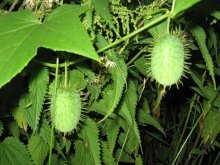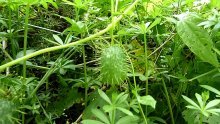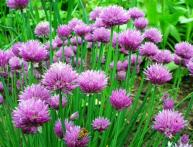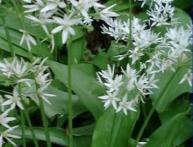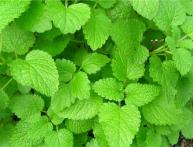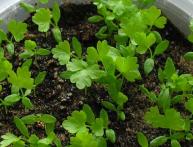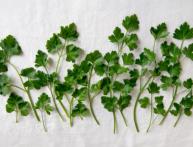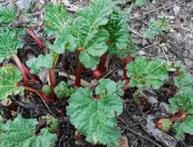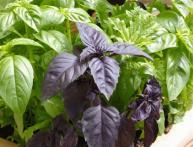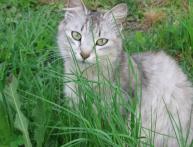Echinocystis, history of the stranger, cultivation and use

Very often, when passing by a fence or gazebo, you can pay attention to curly a plant with white flowers or prickly fruits - hedgehogs. It is noteworthy that it can be found both in populated areas and in fairly remote places, but almost always where a person had previously been. This plant is called Echinocystis. Let's try to understand the history of its appearance, use and cultivation.
Content:
- How did Echinocystis appear in European and Asian nature?
- Prickly carp, botanical description
- How to plant and grow Echinocystis
How did Echinocystis appear in European and Asian nature?
Echinocystis, also known as thorny plant, is a genus of plants that belongs to the Pumpkin family. The homeland of the plant is North America. There is information that in its homeland the plant is classified as medicinal. Decoction roots used as a pain reliever. The plant appeared in Europe and Asia at the same time. In the Asian part, the appearance was noted at the beginning of the last century.
Most likely imported directly from the USA and Canada. The plant immediately spread in the vicinity of Vladivostok and began to move towards Siberia. In the European part at the beginning of the last century, only pinpoint foci of distribution were noted, where the plant may have come from private collections. Before World War II, small outbreaks were noted:
- in Germany
- in Hungary
- in Romania
- in Austria
- in the Czech Republic
The plant was reintroduced during the war by American troops. For several decades, the prickly carp has mastered European countries, from where it moved to Moldova, Belarus and began to move towards Moscow. In the seventies, the plant was actively used in landscaping in the Moscow region and from there it moved to the southern regions. It was noted that the plant runs wild quite quickly and exists perfectly without human intervention.
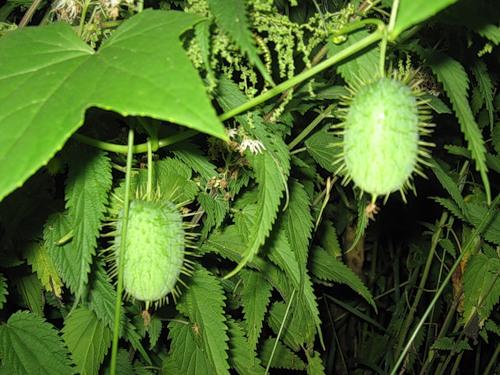
The final phase of wilding is the appearance of rivers and streams in the coastal zone. The plant feels great entwining coastal bushes. It may well compete for soil and light with both bushes and trees. Currently considered a very aggressive species - an invader.
Prickly carp, botanical description
Belonging to the Pumpkin family and the very name of the plant allows you to imagine its appearance. The stems are represented by long lodging shoots that need vertical support. They master any vertical objects very quickly. The root is fibrous, superficial. The leaves are lobed, quite strongly cut. They can be three-five- or seven-bladed.
The plant has male and female flowers at the same time. Male, staminate flowers are small, collected in loose racemes. The brushes are directed upwards. Female, pistillate flowers are much larger than staminate flowers and are always located below the staminate flowers. The corolla of flowers is white, light cream or white-green. The fruit is pumpkin, egg-shaped. Up to 5 - 6 cm in size. At first the color is bluish-green, then green. The top of the fruit is covered with bristly growths.
The outgrowths at the beginning of ripening are soft. Inside, among the mucous contents there are two hard seeds.In normal weather, the fruit opens and heavy seeds fall into the ground. It is noteworthy that sometimes, especially on rainy days, the shell of the fruit is filled with liquid and under its pressure they explode, scattering the seeds several meters. Sometimes because of this property the plant is called rabid cucumbers, although this is a completely different species.
Blooming echinocystis on video:
And even, perhaps, two types. One of them - the common mad cucumber belongs to the same family as the thorny cucumber and is also capable of shooting seeds. The flowers are quite large, single pistillate flowers, similar to the flowers of zucchini or pumpkin. The seeds are small, no more than 4 mm. This plant differs from the thorny plant. The second plant is Momordica, also a relative of all pumpkin plants. The mad cucumber is called momordica, apparently because of the very bitter taste of the ripe fruits.
The seeds of the prickly carp are quite large, up to 15-16 mm. Flattened, dark brown, sometimes almost black. They are similar to pumpkin seeds. Flowering time is early summer - early autumn. Fruit ripening time is September - October. It has no significance as an edible plant, but its unripe fruits are quite edible. Although no one eats them, they contain many useful substances.
The plant is most often used for vertical gardening or as a honey plant that blooms all summer. Honey is almost colorless and very aromatic. Bees collect pollen from the plant. A significant advantage of this honey plant is its long flowering. If Echinocystis still interests you, then grow its quite simple.
How to plant and grow Echinocystis
To grow, you need seeds. It is optimal to plant freshly harvested seeds immediately after harvest before winter.It is advisable to decide on the planting site immediately, since the plant does not tolerate transplantation well and will die if the roots are damaged at the slightest level. The thorny plant is planted using the nesting method, two seeds per nest. Since vertical support is needed for growth, the plantings should be located near:
- fence
- utility buildings
- gazebos or verandas
- vertical slopes

It is important that the soil is as light and loose as possible. The reaction is closer to neutral. On highly acidic and heavy soil with excess moisture, the plant develops extremely poorly and it is unlikely that you will get beautiful and healthy greenery with lush flowering.
Embed into the ground to a depth of 2-3 cm, but you can leave it without embedding, just press it lightly into the ground.
You can either immediately leave a fairly large distance of up to 50 - 90 cm, or in the spring you will have to thin out the seedlings. The plant does not need special care; weeding and watering in dry weather are sufficient. If you make a choice in favor of thorny carp, you can buy its seeds in stores seeds, including on the Internet.

